Abstract
This study evaluated the effects of a fine mist of water applied to the face contingent upon self-injurious behavior (SIB) exhibited by profoundly retarded persons. In Experiment 1, results of individual reversal designs showed substantial reductions in a variety of SIB's (mouthing, hand biting, skin tearing, and head banging) for seven participants. In Experiment 2, two participants who frequently bit their hands were each observed in two different settings. Following initial baselines in each setting, a series of manipulations was undertaken to compare the effects of mild verbal punishment ("No") with those of a combined treatment ("No" plus mist procedure). Results in one setting indicated that "No" suppressed SIB only after it was first paired with the water mist. Data also suggested that, once acquired, the punishing properties of "No" could be extended to a second setting in which the mist was never applied, and that these effects could be generalized across therapists. Results of these experiments indicate that the water mist procedure may be an effective alternative to traditional punishment techniques. Although conclusions regarding generalization are limited due to the brevity of the maintenance conditions, the data suggest that treatment gains may be transferred to more acceptable forms of social punishment and reinforcement.
Full text
PDF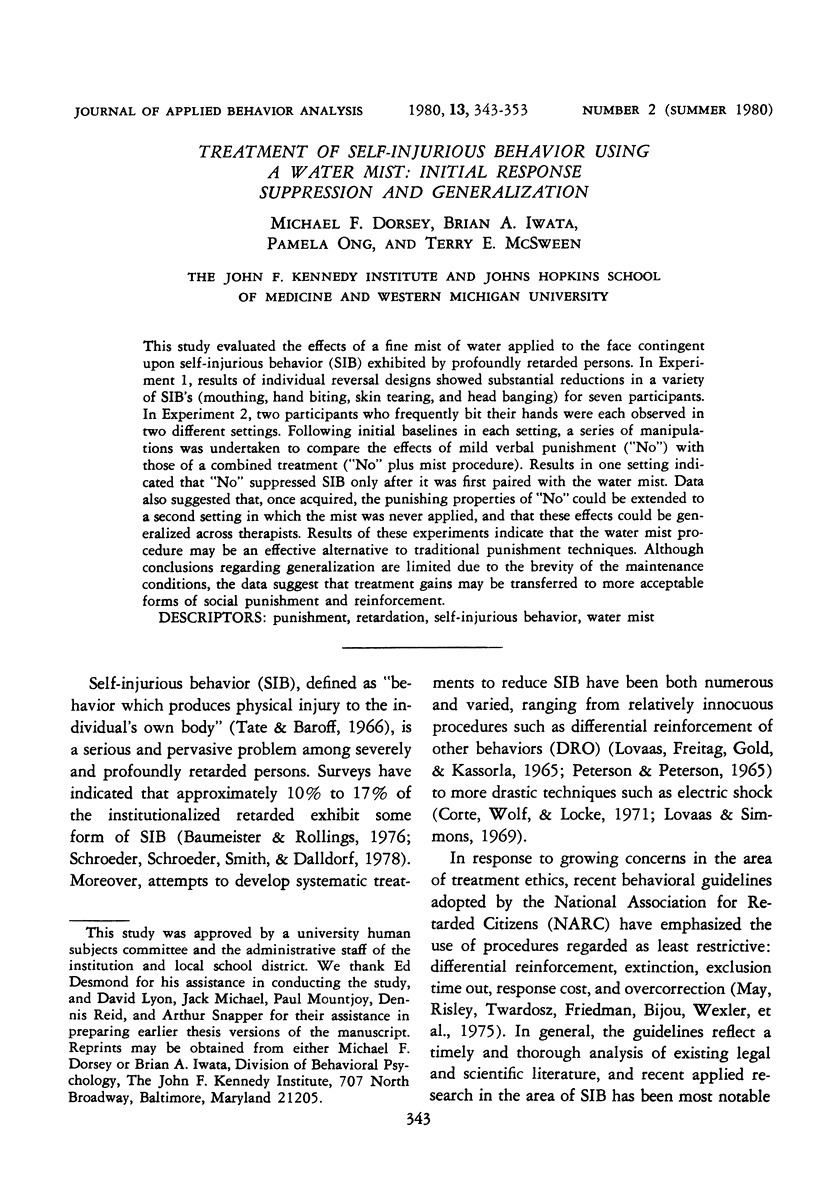

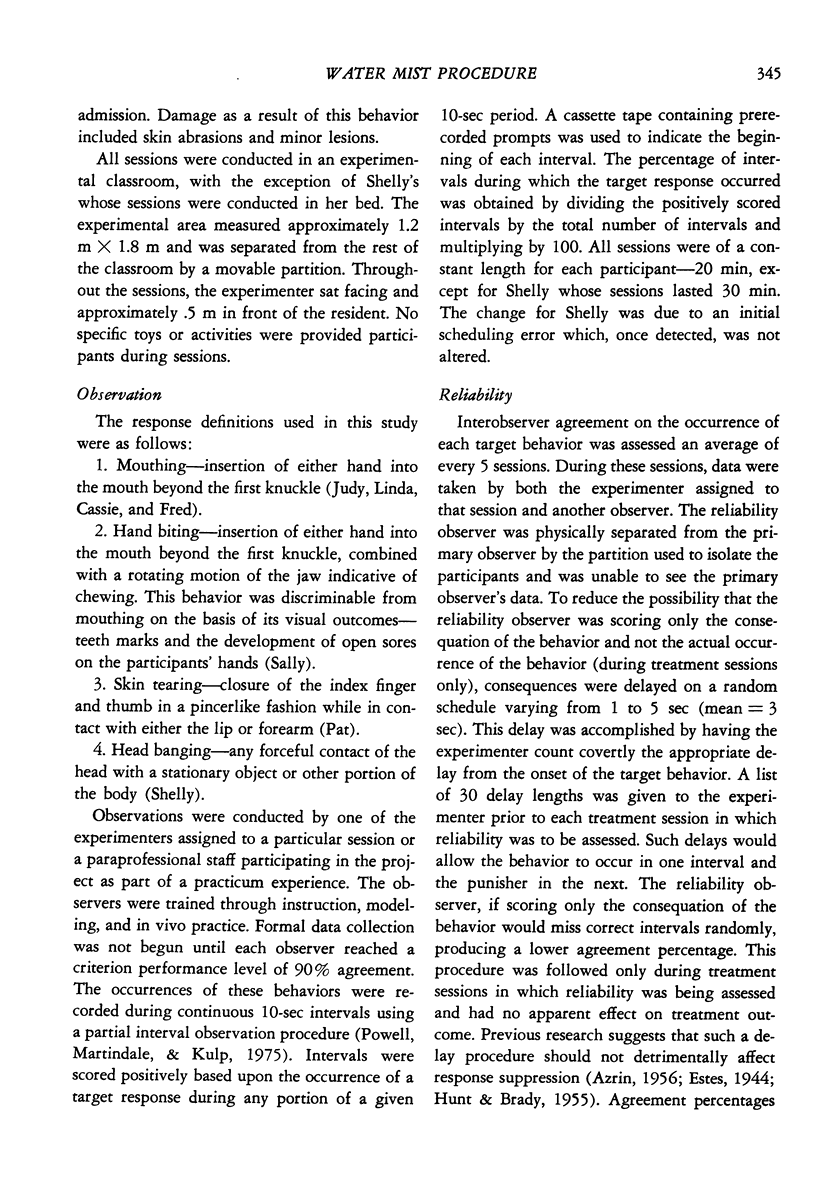
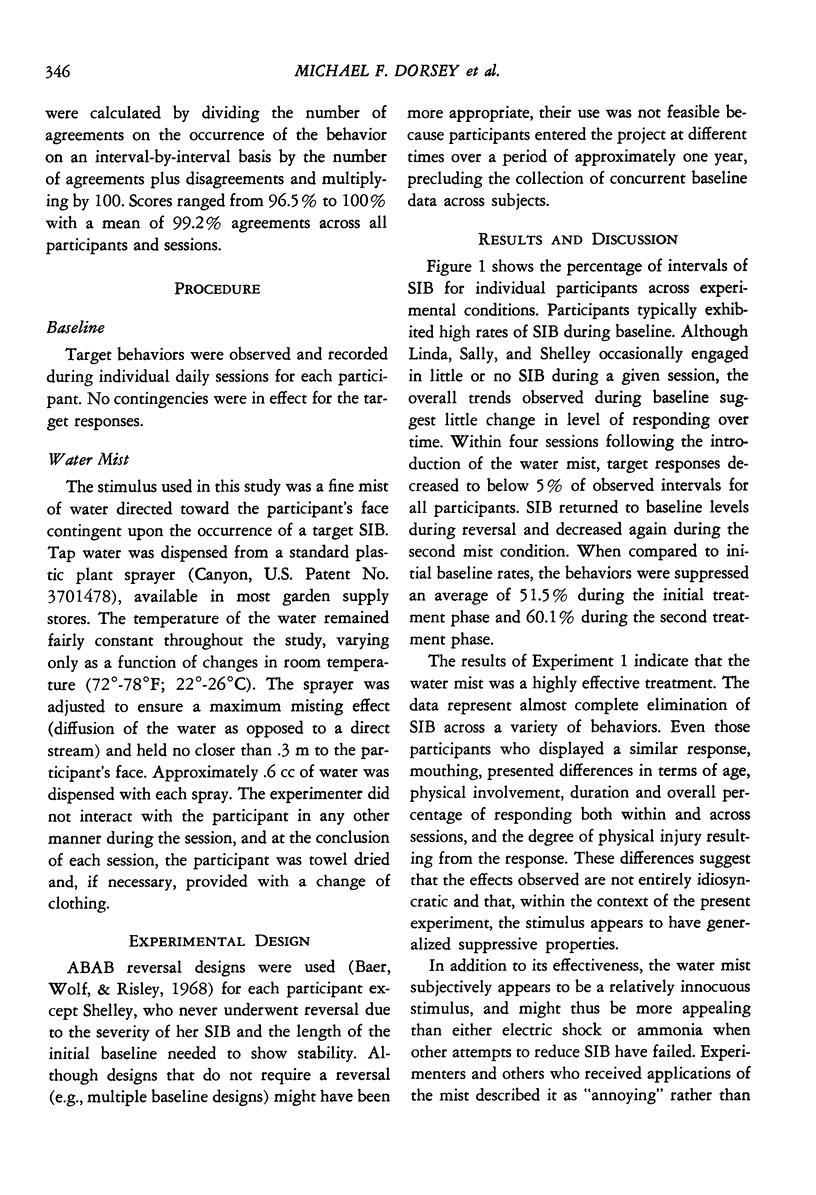



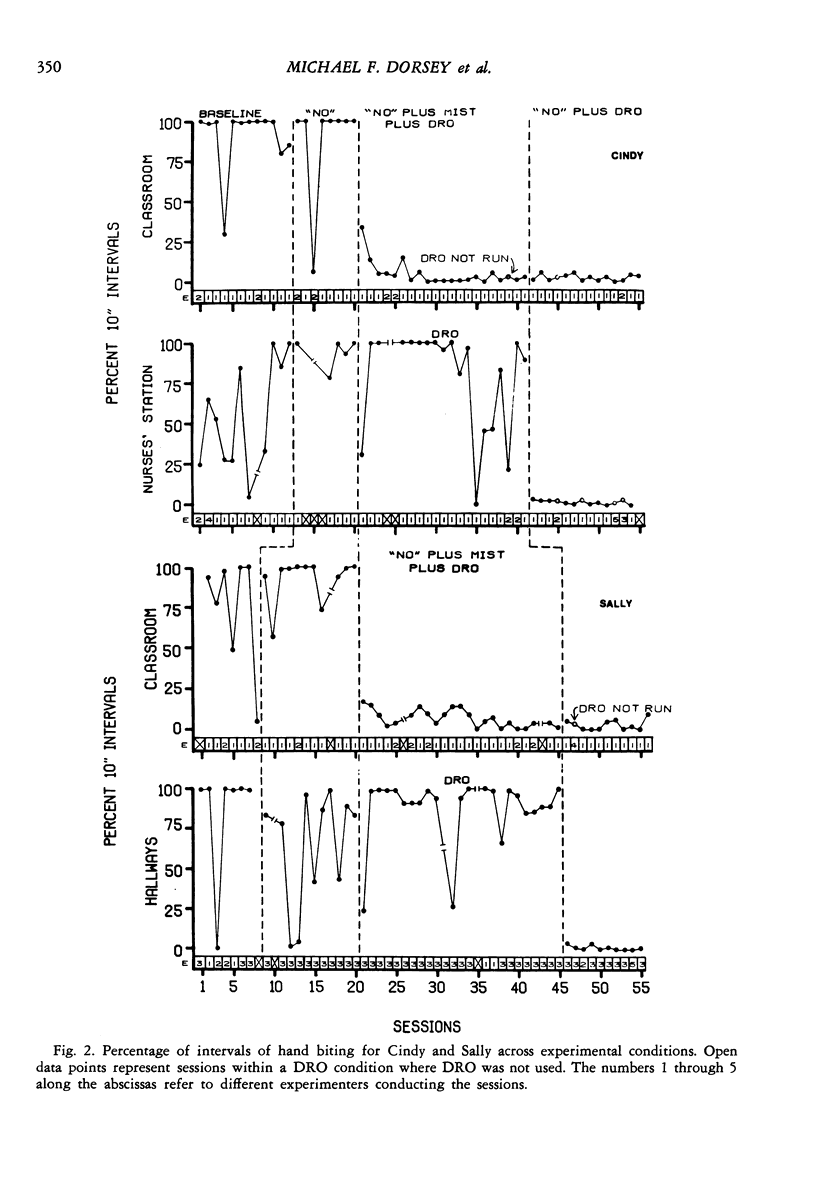
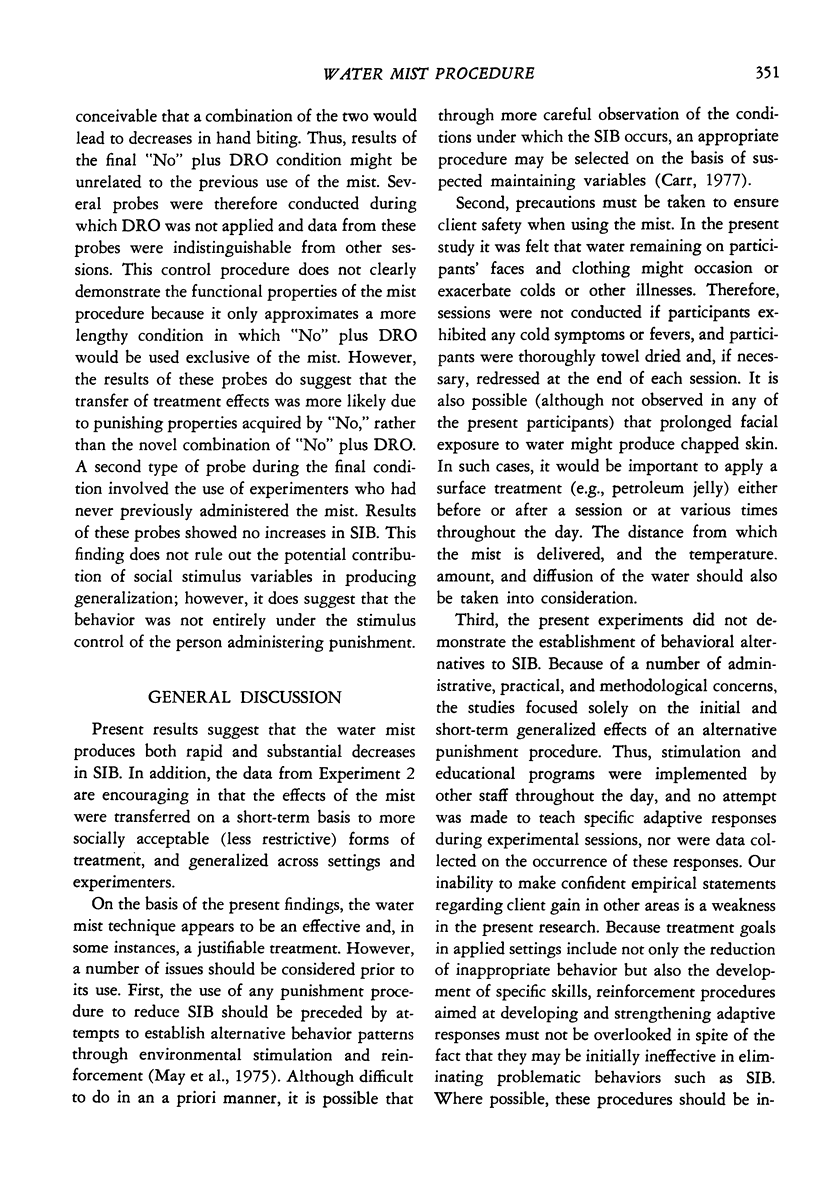
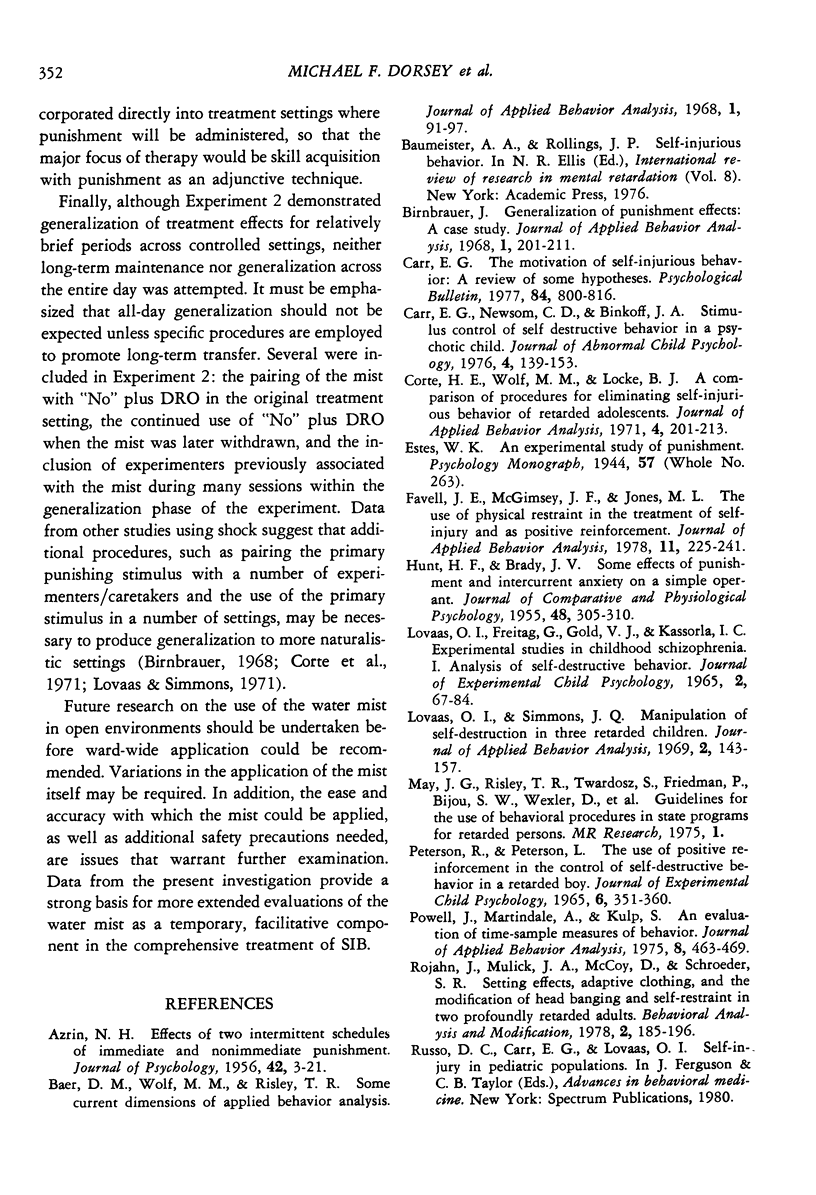
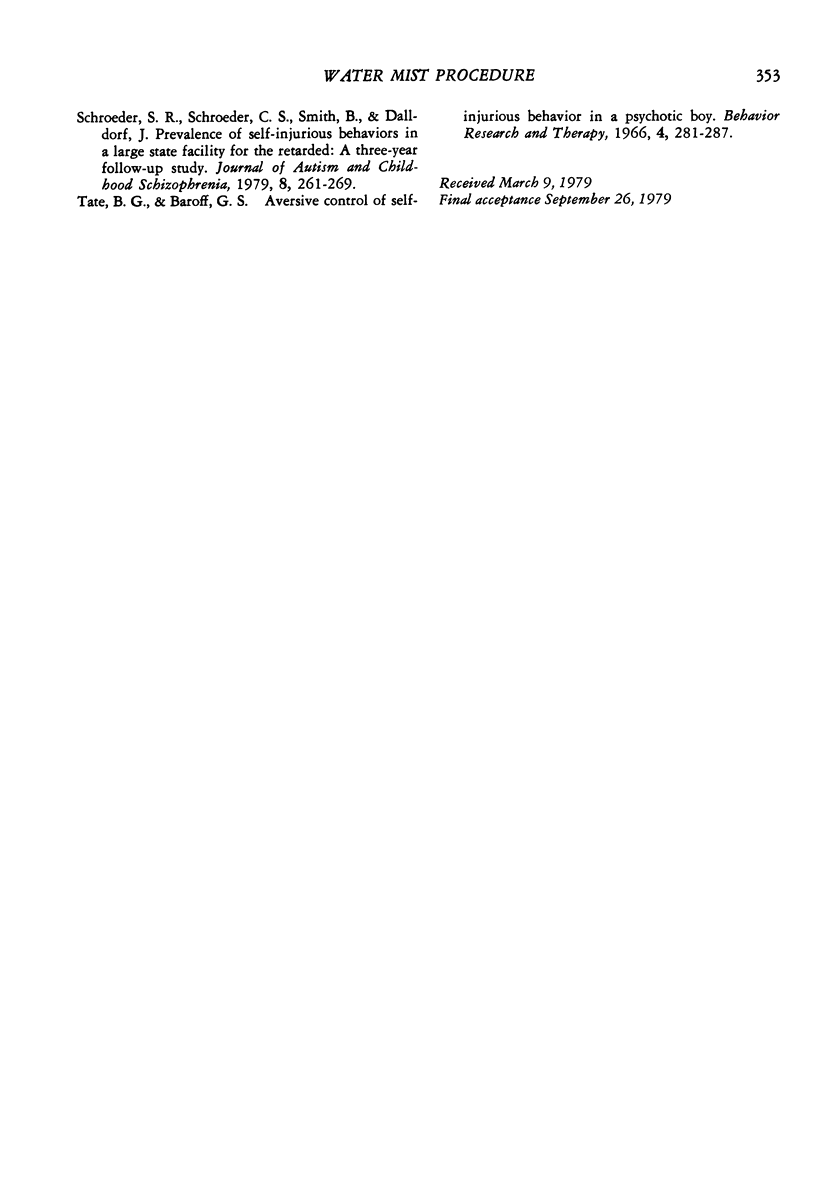
Selected References
These references are in PubMed. This may not be the complete list of references from this article.
- Baer D. M., Wolf M. M., Risley T. R. Some current dimensions of applied behavior analysis. J Appl Behav Anal. 1968 Spring;1(1):91–97. doi: 10.1901/jaba.1968.1-91. [DOI] [PMC free article] [PubMed] [Google Scholar]
- Birnbrauer J. S. Generalization of punishment effects-a case study. J Appl Behav Anal. 1968 Fall;1(3):201–211. doi: 10.1901/jaba.1968.1-201. [DOI] [PMC free article] [PubMed] [Google Scholar]
- Carr E. G., Newsom C. D., Binkoff J. A. Stimulus control of self-destructive behavior in a psychotic child. J Abnorm Child Psychol. 1976;4(2):139–153. doi: 10.1007/BF00916518. [DOI] [PubMed] [Google Scholar]
- Carr E. G. The motivation of self-injurious behavior: a review of some hypotheses. Psychol Bull. 1977 Jul;84(4):800–816. [PubMed] [Google Scholar]
- Corte H. E., Wolf M. M., Locke B. J. A comparison of procedures for eliminating self-injurious behavior of retarded adolescents. J Appl Behav Anal. 1971 Fall;4(3):201–213. doi: 10.1901/jaba.1971.4-201. [DOI] [PMC free article] [PubMed] [Google Scholar]
- Favell J. E., McGimsey J. F., Jones M. L. The use of physical restraint in the treatment of self-injury and as positive reinforcement. J Appl Behav Anal. 1978 Summer;11(2):225–241. doi: 10.1901/jaba.1978.11-225. [DOI] [PMC free article] [PubMed] [Google Scholar]
- Lovaas O. I., Simmons J. Q. Manipulation of self-destruction in three retarded children. J Appl Behav Anal. 1969 Fall;2(3):143–157. doi: 10.1901/jaba.1969.2-143. [DOI] [PMC free article] [PubMed] [Google Scholar]
- Powell J., Martindale A., Kulp S. An evaluation of time-sample measures of behavior. J Appl Behav Anal. 1975 Winter;8(4):463–469. doi: 10.1901/jaba.1975.8-463. [DOI] [PMC free article] [PubMed] [Google Scholar]
- Tate B. G., Baroff G. S. Aversive control of self-injurious behavior in a psychotic boy. Behav Res Ther. 1966 Nov;4(4):281–287. doi: 10.1016/0005-7967(66)90024-6. [DOI] [PubMed] [Google Scholar]


